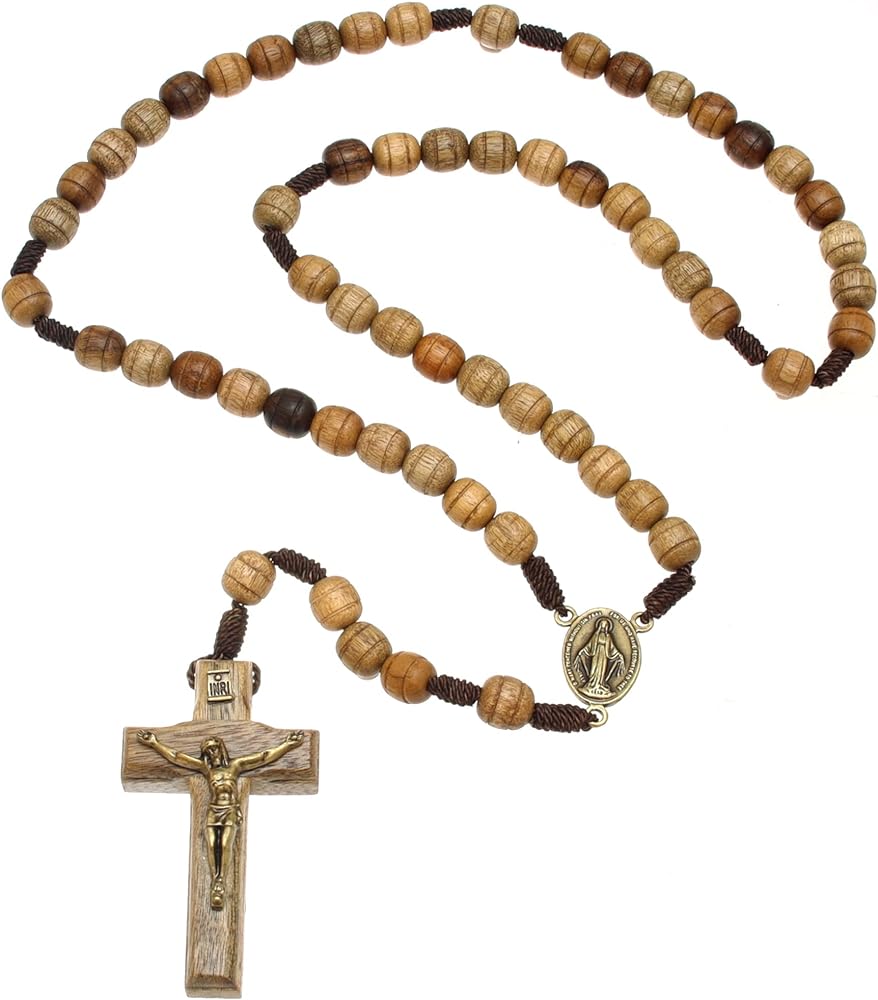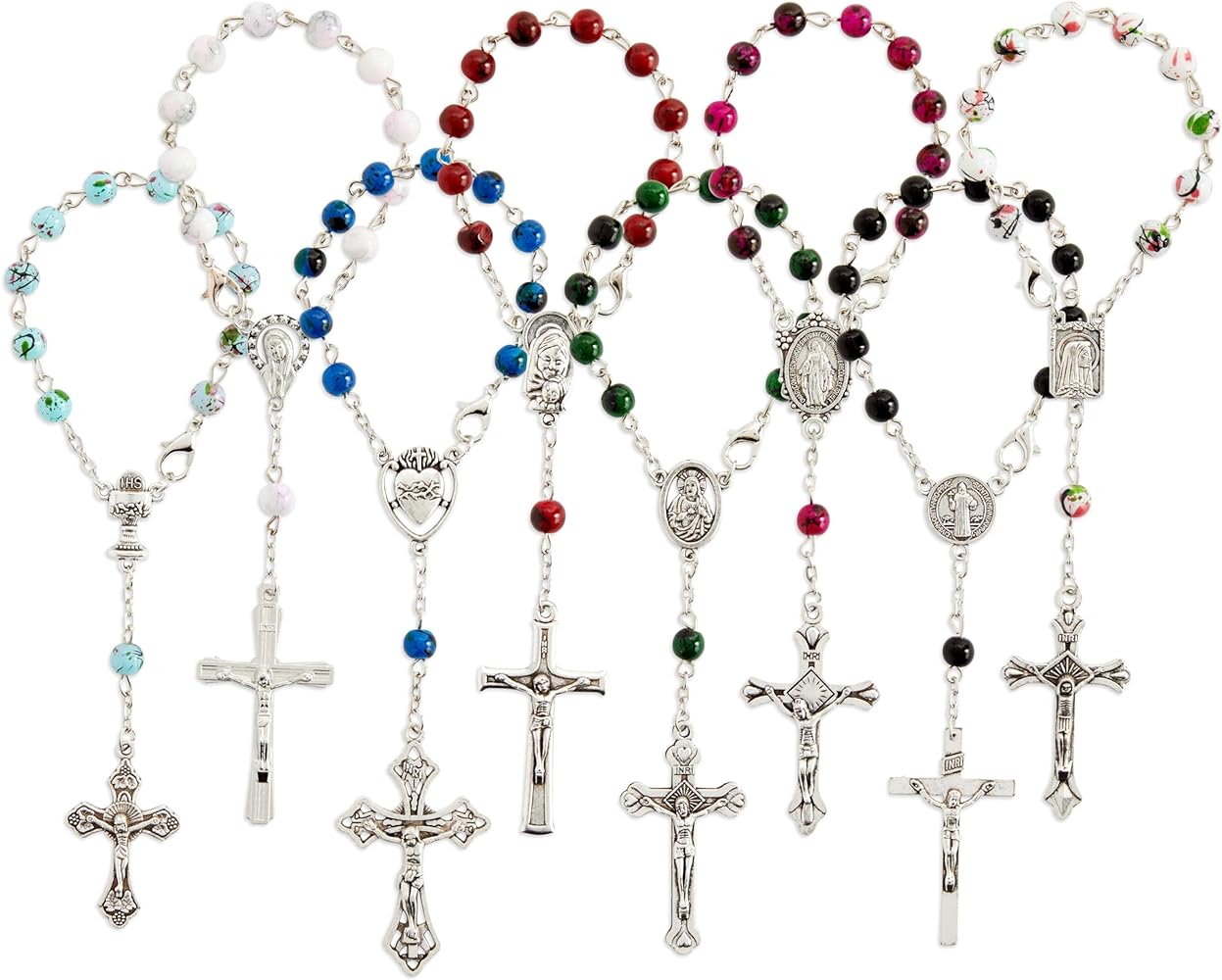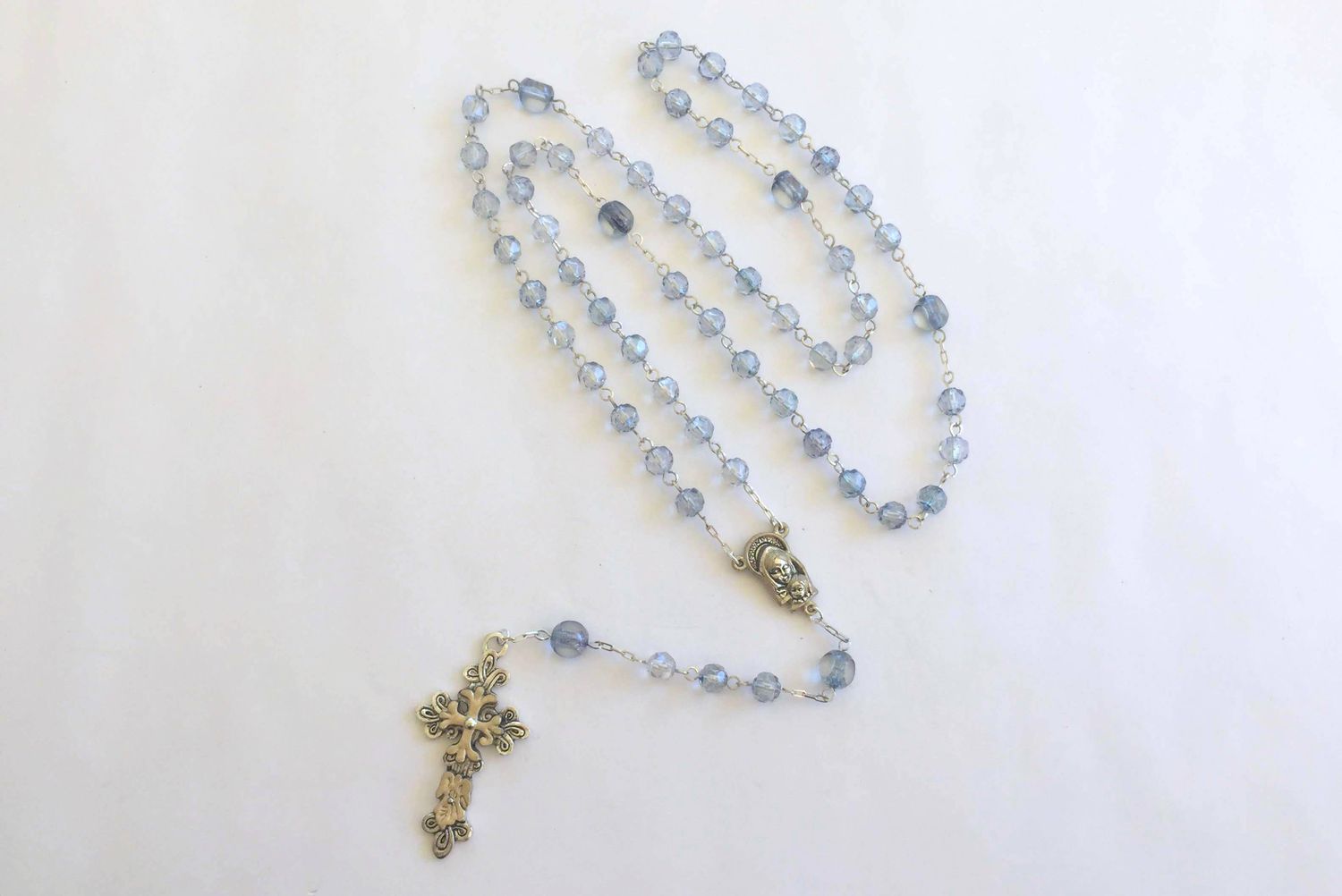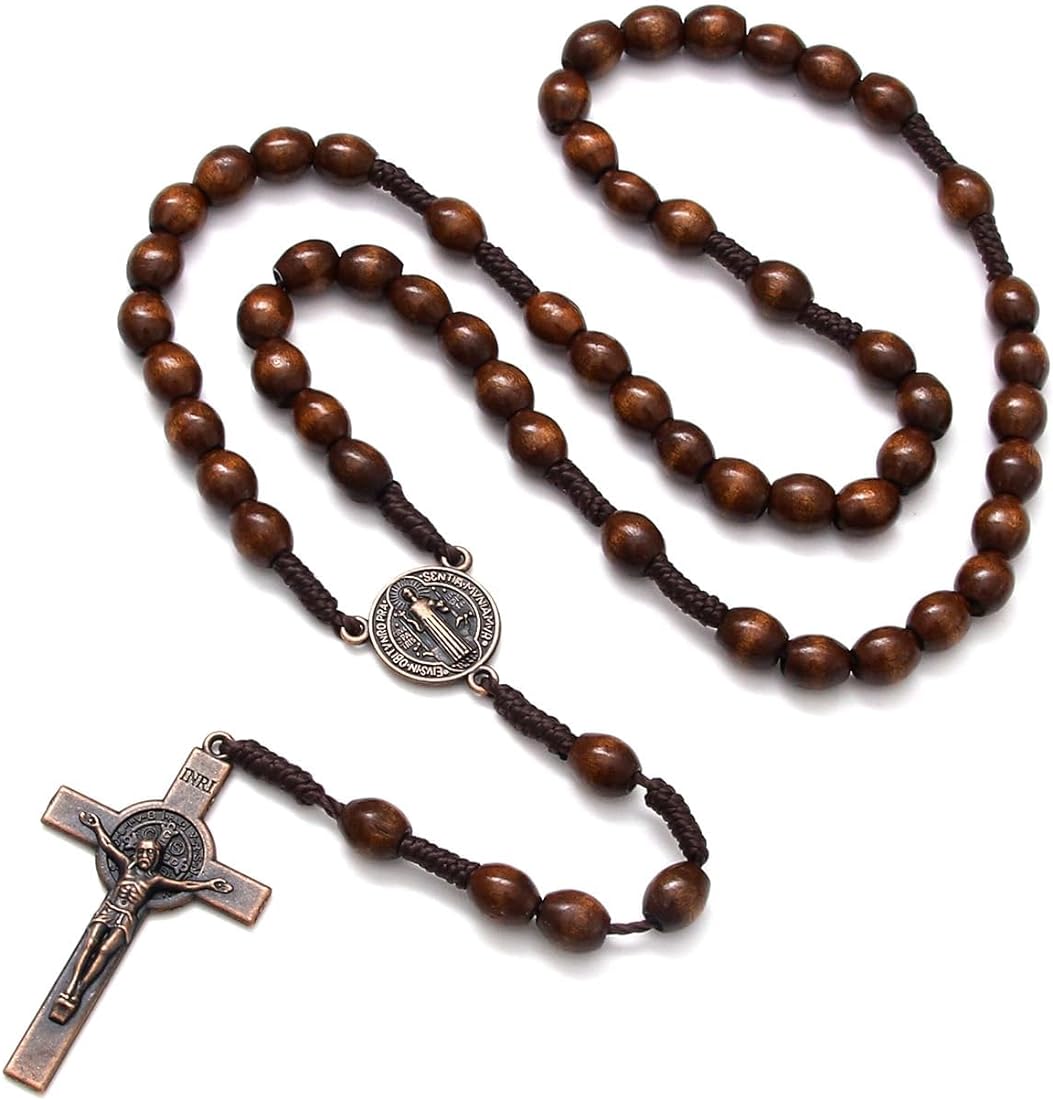
In the realm of Christian spirituality, the rosary stands as a cherished devotional tool, a tangible expression of faith that has guided countless individuals for centuries. Its intricate design, adorned with beads of varying sizes and significance, has intrigued and inspired many, prompting questions about its symbolism and purpose. Among these queries, one stands out: how many beads are in a rosary?
The Traditional Five-Decade Rosary: A Standard for Many
The most common type of rosary, the five-decade rosary, serves as a foundational model for understanding bead counts and their significance. At the heart of this rosary lies the concept of a decade, a group of ten Hail Mary beads. These beads, named after the prayer they represent, are interspersed with larger Our Father beads, each marking the beginning of a new decade.
The number of Hail Mary beads in a five-decade rosary, 53, holds a special meaning. It reflects the number of greetings addressed to Mary, the mother of Jesus, in the Hail Mary prayer. This repetition, symbolizing devotion and reverence, forms a central element of rosary prayer.
Variations in Rosary Bead Counts: Accommodating Different Practices
While the five-decade rosary remains the standard, variations exist to accommodate diverse devotional preferences and prayer practices. For those seeking a shorter form of prayer, the three-decade rosary offers a concise alternative, with three decades of Hail Mary beads. This variation is often favored by children or individuals with limited time.
On the other hand, those seeking deeper contemplation or adhering to specific religious traditions may find solace in the fifteen-decade rosary. This extended version features fifteen decades of Hail Mary beads, often associated with religious orders or individuals seeking a more profound spiritual engagement.
Understanding the Significance of Bead Counts: Beyond Numbers
It is crucial to recognize that the number of beads in a rosary is not the primary focus of the prayer; it serves as a guide for reciting the prayers and reflecting on the mysteries of Christ’s life, death, and resurrection. Each bead, in essence, represents a step in a journey of spiritual contemplation.
The symbolic meaning of the bead counts extends beyond mere numbers. The five decades of the traditional rosary correspond to the five joyful mysteries, the five sorrowful mysteries, and the five glorious mysteries. These sets of mysteries encapsulate the central events of Christ’s life, providing a framework for meditation and reflection.
Choosing the Right Rosary: A Personal Journey
The selection of a rosary is a personal decision, influenced by individual devotional preferences and prayer habits. Beginners may find it beneficial to start with a traditional five-decade rosary to familiarize themselves with the basic structure and prayers. As one’s faith and prayer practices deepen, exploring different bead counts and rosary types can enrich the spiritual experience.
The Rosary: A Tool for Spiritual Growth and Connection
The rosary’s true value lies not in the number of beads but in its role as a tool for spiritual growth, meditation, and connection with God. Through prayerful intention and reflection, the rosary facilitates a deeper understanding of Christ’s teachings and fosters a personal relationship with the divine.
Beyond the Beads: Materials and Symbolism
While the number of beads serves a practical purpose, the materials used in rosary construction also hold symbolic meaning:
-
Wood: Often associated with strength and stability, wooden rosaries represent the enduring nature of faith and the teachings of Christ.
-
Pearls: Traditionally signifying purity and wisdom, pearl rosaries symbolize the virtues of Mary, the mother of Jesus.
-
Glass: Representing clarity and light, glass rosaries evoke the spiritual illumination sought through prayer and reflection.
-
Gemstones: Specific gemstones, like amethyst for peace or rose quartz for love, can offer additional layers of personal meaning to the rosary.
The rosary, though most commonly associated with Catholicism, transcends denominational boundaries. Here’s how other Christian traditions utilize the rosary:
-
Anglican Rosary: Featuring 33 beads, representing the years of Christ’s life, Anglican rosaries focus on specific prayers and meditations.
-
Lutheran Rosary: Similar to the Anglican rosary, the Lutheran rosary includes 54 beads for reflection on Christ’s life and teachings.
-
Eastern Orthodoxy: While not using a physical rosary, some Eastern Orthodox traditions incorporate prayer ropes with specific knot patterns for guided prayer.
The Power of Ritual and Repetition in Prayer
The rosary’s structure, with its repetitive prayers and bead sequences, serves a significant purpose in prayer:
-
Focus and Concentration: The repetitive nature helps quiet the mind and focus on the mysteries being contemplated, promoting deeper reflection.
-
Internalization of Prayer: Repetition allows the prayers to become ingrained in the memory, fostering a sense of familiarity and comfort during prayer.
-
Meditation and Contemplation: The rosary acts as a springboard for deeper meditation on the mysteries, allowing individuals to connect with their faith on a deeper level.
By embracing the rosary as a tool for focused prayer, meditation, and connection with God, individuals from all walks of faith can benefit from its rich tradition and timeless message.
The Rosary in Daily Life: Practical Tips for Integration
Integrating the rosary into your daily life can enrich your spiritual practice. Here are some practical tips:
-
Finding Prayer Time: Dedicate a specific time each day, whether morning or evening, for consistent rosary prayer.
-
Creating a Prayer Space: Designate a quiet space in your home for focused prayer with your rosary.
-
Setting Intentions: Before beginning, set an intention for your prayer, focusing on a specific need or seeking guidance from God.
-
Engaging with the Mysteries: Briefly read or meditate on the mystery corresponding to each decade for deeper reflection.
-
Finding Comfort in Repetition: Embrace the repetitive nature of the prayers, allowing them to become a source of comfort and familiarity.
-
Reflecting on Personal Experiences: Use the prayers as a springboard to reflect on your own life experiences and how they connect to the mysteries.
-
Connecting with Prayer Groups: Consider joining a rosary prayer group for a sense of community and shared devotion.
-
Adapting the Rosary for Different Needs: Explore shorter versions of the rosary or adapt the practice to fit your schedule or limitations.
Conclusion
The rosary, with its intricate design and symbolic bead counts, stands as a testament to the enduring power of prayer and devotion. It is a tool that has guided countless individuals on their spiritual journeys, offering a path towards deeper understanding, personal connection with God, and spiritual growth.
Call to Action
Embrace the rosary as a tool for spiritual growth and connection. Explore its rich tradition and incorporate it into your daily prayers or devotional practices. Share your experiences with the rosary and its impact on your faith journey. Let the rosary be a guide on your path towards a deeper understanding of God’s love and grace.